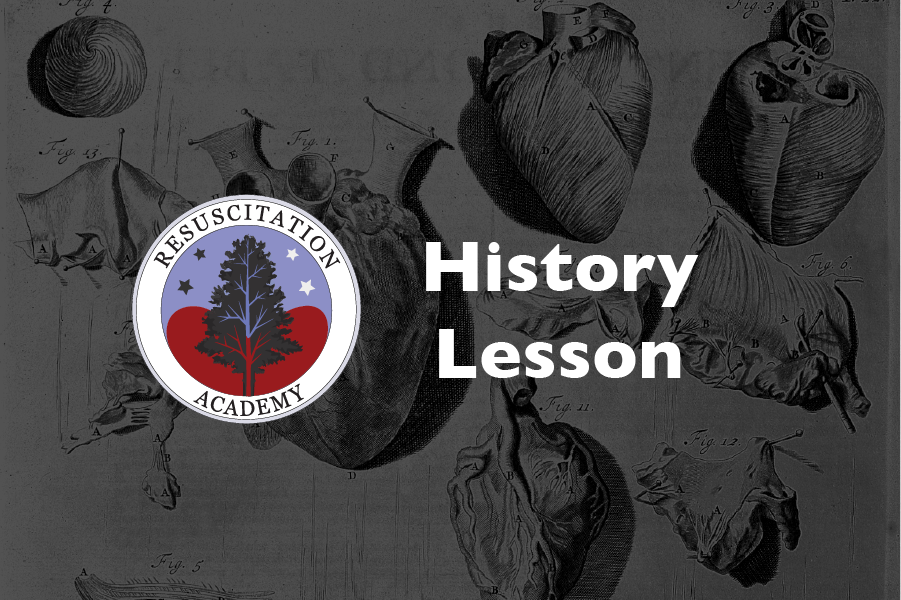The Evolution of Quality CPR: What Exactly IS High-Performance, Anyway?
“How can we do better?” That was the rallying cry of the late Seattle Fire Captain Craig Aman, a tireless advocate for improving cardiac arrest survival rates.
As the resuscitation community knows, out-of-hospital cardiac arrest is a leading cause of premature death worldwide. Survival is variable (often less than 5%) and depends on effective CPR and early defibrillation. To improve these dismal statistics, it’s important to understand and optimize modifiable predictors of outcome — including the quality of CPR.
In pursuit of that goal, one often hears the phrase, “high-performance CPR”. But what does that mean in practical terms? And how can EMS teams know they’re actually doing it?
The impetus behind HP-CPR
Resuscitation Academy faculty member Mike Helbock offers some context for the development of HP-CPR.
“Decades ago, Seattle Fire began recording metrics like compression rates, depth and chest recoil. And, surprise — we found that we weren’t nearly as good as we thought we were.”
According to Helbock, that led to the discovery that excessive pauses between compressions were occurring during CPR.
“Did a pause have anything to do with the outcome? Science has proven, absolutely. We began looking at ways to tighten the mechanics of CPR and decrease pauses in every way possible. We completely rebuilt our approach from the ground up, started measuring individual as well as team performance — and began to see an increase in performance and survival rates,” Helbock explains.
The cause of the pause
Low compression fraction or density can occur for obvious reasons. First, to ventilate or intubate the patient. Next, the use of an AED, which does not allow for analysis of rhythm during compressions.
For Helbock, the most surprising reason was complacency among EMTs and paramedics.
“On the surface, we were doing everything we were trained to do. But every pause — justified or not —represented a decrease in the chance for survival.”
The proof is in the numbers
Data from the Resuscitation Outcomes Consortium demonstrates that a one percent increase in fraction time equates to roughly a one percent increase in survival rates.
“So, if you improve your 50% compression fraction to 70%, that’s a 20% better shot your patient has for survival,” says Helbock.
Fraction time for King County responders was in the 40-50% range; today, performance measures now show they’re in the mid-80% to low 90% — all because they were trained to eliminate pauses.
So why isn’t everyone doing HP-CPR?
Good question. Clearly, there are some common misconceptions preventing the widespread adoption of this proven methodology —read on to learn about the top 3 misconceptions.
Misconception #1 — “We took a pit crew CPR class. It’s the same thing, right?”
The concept of a highly trained and choreographed crew is a powerful, relatable analogy for the work of an EMS team. Pit crew CPR training focuses on highly defined roles that aid in the organization of a chaotic scene.
In comparison, HP-CPR is much more than instinctively knowing where to go and what to do. It’s about routine measurement of performance and understanding how to increase that performance, which requires an incredible commitment to monitoring, remediation and retraining.
Another key difference, according to Hilton Head Island Fire Rescue Captain and South Carolina Resuscitation Academy Program Director Tom Bouthillet, is the use of instrumented manikins in HP-CPR training to perfect rate, depth, recoil, ventilation, and peri-shock pause.
Says Bouthillet, “With instrumented manikins, I can tell you that you’re at 96% compression fraction. Depth is 92%. Ventilation volume is 400cc — all spot on. But I see 82% fraction time, which means you pause too often — and now I can give you analytics to tell you how to get better. Because until you’re measured, you have no way to know how to improve.”
Misconception #2 — “HP-CPR is just a new protocol.”
A key Resuscitation Academy mantra is “performance, not protocol”. Whatever protocol you’re following, do it well — as if someone’s life depends on it.
To dismiss HP-CPR as simply the latest protocol improvement leaves out the important part: performance. Practicing it, measuring it, applying it, mastering it, then repeating the process all over again —that’s what makes HP-CPR effective.
Misconception #3 — “HP-CPR is all about training.”
Unfortunately, training is the (relatively) simple and straightforward component of HP-CPR. The challenge is recognizing that change is needed, then making it stick.
Admitting that your performance warrants improvement can be a difficult pill to swallow —especially when you’re in the business of saving lives. And acknowledging the need for change is just the first step. It needs to be bolstered by a commitment to continuous improvement through training, measurement, and recertification. There’s no magic bullet, according to Mickey Eisenberg, MD, president of the Resuscitation Academy Foundation.
“Fostering change in an entrenched culture is likely the toughest task most leaders will ever face. Until an organization truly wants to measure performance, it will not move forward.”
This change in culture is important for many reasons, adds Bouthillet.
“We can talk about the ‘atmosphere of continuous quality improvement,’ but what’s often overlooked is what it does for employee morale. Who doesn’t want to be good at their job? And in this case, we’re not making widgets. We’re giving people another chance at life.”
Improved outcomes start today
Past experience tends to guide future experience. Once teams train and practice their craft as if they intend to save a life — and do — then success becomes the new normal. Start by asking yourself, your teammates and your organizational leaders, “How can we do better?”, and you’ll be on the way to a high-performance new normal.
The Resuscitation Academy
SOURCES
Christenson, Jim, et al. “Chest compression fraction determines survival in patients with out-of-hospital ventricular fibrillation.” Circulation 120.13 (2009): 1241-1247.











There are opportunities to significantly increase survival from out of hospital cardiac arrest. Implementation of existing standards and training programs for telephone CPR and high-performance CPR will do much to improve survival.